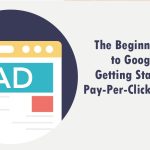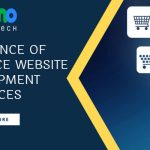If you have a business, you must have a website in this modern digital world. Yet simply having a website is insufficient. It is crucial to ensure potential clients or visitors can find your website quickly. Search engine optimization (SEO) is a technique for improving your website. This way, your website can increase its ranking on search engines like Google is one approach. In this post, we will provide some pointers and best practices for search engine optimization so you can boost your website’s exposure and draw in more visitors. So let’s read how you can optimize your website for search engines.
What Is SEO?
Before understanding SEO, you should know it expands to Search Engine Optimization. SEO plays a major or significant role in your website’s ranking on Google’s algorithm. How you can perform SEO is a question.
Well, the content on your website is made simple for search engines to understand using a digital marketing strategy called SEO. Whatever information you upload on your website pages is “read” and analyzed by search engines as they constantly “scan” and index websites.
Then, based on what you offer and who could find your information or products beneficial, they decide what position your website will take in the search engine results.
The likelihood that you’ll connect with the ideal audiences for your business will increase thanks to effective SEO, making it easier for search engines to select when to present a piece of content from your website to searchers.
Instead of traffic from paid search engine results, the SEO plan we’re talking about focuses on traffic from search engine results in pages. The two main subfields of SEO are content marketing and technical SEO.
There are Three Different Types Of SEO
SEO has multiple dimensions since Google and other search engines take various criteria into account when ranking content. On-page, off-page, and technical SEO are the three main categories of SEO:
On-Page SEO
Improving the calibre and organization of the content on a page is known as on-page SEO. While working on On-page SEO, one should always consider these three factors.
- Quality of the content
- Keywords they are using
- HTML tags
Off-Page SEO
Obtaining links from other websites and pages on your website to the page you seek to improve is known as off-page SEO. While working on the Off-page SEO, keep the following factors in mind:
- MVPs are backlinks, so pay good attention to them.
- Internal linkings are essential.
Technical SEO
Enhance your website’s overall performance on search engines with the help of technical SEO. UX, structure, and site security (SSL certificates) are crucial.
Why Is SEO Important?
Understood different types of SEO in the above section, is SEO essential? Well, the answer is Yes, it is.
SEO is essential because most consumers only click the first few links on page one of search results. The whole concept is to attract new visitors. Hence this will help you to improve your KPIs like sales.
Hence this is how you can optimize your website with the help of SEO., and your website will have a high potential to show up on the first page of search results. You can go above and beyond by building your brand on social media, for example, to increase your audience.
For instance, when someone starts an online flower store, they have a flower line. Therefore they should deliberately optimize their product pages. Hence if your shop is listed on the SERP, that means whenever someone searches for follower shops. Your business will be among the top search result.
Hence with this example, you might have understood why optimizing your website for search engines is essential.
How Does SEO Work?
Before figuring out your SEO strategy for your website, you need to understand how SEO works. For that, you also need to understand what criteria Google uses to choose which pages are on the top, which is the search engine results page (SERP).
Your curiosity should also include questions like how it will affect the volume of visitors to your website. To clear your doubts, read this section carefully. All the websites you see today are stored in Google’s index. Not just that, these websites are held as per their categories.
This work is done by Google’s crawler, which crawls like a spider to all the data uploaded on Google. Then it got stored as per the category they belong to. Google doesn’t show results according to the actual web, instead using its index.
Your content should be as per your website domain. It is one of the factors responsible for the ranking factors used by Google. It is one of the factors to decide the results’ order (which we’ll cover next).
Users engage analysis is how Google makes its lists. It requires additional information about the needs that each page satisfies or doesn’t. This is taken into account while developing the algorithm.
You can think of SEO as a sophisticated analyst which GivesGives feedback to a system that uses user input. Google always gives its users the most accurate, reliable, and relevant results. Therefore your job is to provide material that meets Google’s expertise, authorization, and trustworthiness criteria.
How To Improve And Optimize Your Website On-page And Off-page SEO
It’s time to discuss SEO in more detail—specifically, how to optimize your website for these elements so that you may rank better on Google and attract more visitors. We will arrange the phases this way because this involves a combination of on-page, off-page, and technological optimizations. These are some of the steps for on-page SEO:
- Research keywords first
- Make high-quality content with those keywords in mind.
- Put your keywords here.
- Improve your titles.
- Improve your meta descriptions.
- Embedding and optimizing pictures
- Links, both internal and external
1. Research SEO Keywords First
Choosing the keywords you want to optimize your website for is the first stage in search engine optimization. To avoid competing with each page on your website. You should target a separate keyword cluster based on the terms prospective web visitors are likely to enter into search engines such as Google. By following these easy steps, you can choose the keyword phrases to target with your organic matter content:
Make a list of your seeds: List the Google search terms your ideal clients use. Consider their objectives, challenges, needs, and language, which may differ from yours.
Keyword researching: Connect them to a tool for keyword research, which will provide statistics about these terms so you can determine which duration you can rank for and where the best prospects are. It includes search volume and Competition.
2. Make High-quality Content With Those Keywords In Mind
Most of the keyword targeting falls under the long form of content. It could be blogs, articles, or anything. These will be available on your primary navigation page, like on your homepage or contact us page, or could be on the “about us” section. SEO-optimized content is:
In line with the meaning of the keyword: Make sure your material is in line with the information people seek when they search for this keyword. The keyword should, therefore, always be searched for on Google first.
Provide a satisfying experience: It employs graphics to illustrate concepts and loads swiftly. It should be compatible with all devices without unnecessarily aggressive pop-ups, CTAs, or other distracting components.
Naturally reads: Avoid keyword stuffing. Make sure you write to interact with your audience. Your content should be optimized for search engines along also.
In-depth: Pages that are thin, duplicate, or of low value are not attractive to Google. This should be around 1,500–2,500 words, at least including relevant information.
Organized: If you want to show the content hierarchy on your page. Then it would be best if you used better header tags under it.
Put your keywords here: Other than keywords, to tell Google what you are trying to get rank, add those keywords in between the content body. Place them into a few essential locations on the page. This comprises:
- SEO title
- Page title
- Image alt text
- Image file name
- URL
- Meta description
3. Improve Your Titles
The title tag, the title that shows on the SERP, is the spot where your keyword will have the most significant influence. When users click just on the website’s header, the H1 tag gets displayed. They may vary depending on the site. Ensure the following to optimize your titles:
- Include the keyword
- Have only one H1 per page
- Keep title tags to 55-60 characters.
4. Improve Your Meta Descriptions
The text that follows the title tag on the SERP is known as the title tag. It’s still crucial to optimize your website for SEO even though Google frequently builds its own SERP instead of using the one you’ve provided.
Also, remember to Google Read any description you add while indexing a page to have more information regarding the topic.
5. Embedding And Optimizing Pictures
Pictures are an essential component of SEO optimization. Pictures offer more comprehensive information, gain visitor attention, deliver a quick and direct message, etc. Google has been boosting the SERP’s visual appeal.
6. Links, Both Internal And External
Pay good attention to both internal and external links. While performing SEO for your blog content, be considerate of it.
- External links: Locate 1-3 pages on other websites with high domain authority pertinent to your target topic and link to them in your post. Follow it, and your website will gain Google’s trust.
- Internal links: Use “high domain authority” as the anchor phrase to link to specific other blog entries on your site within the text of the post you’re producing, as I did in the last bullet. This will offer Goggle multiple ways to reach your site easily. This will help search engines to index overall. It would be best to decide how many to place here depending on how long the post is and how much other stuff you can link to. Check their relevance to ensure the links make sense with your page and anchor text.
7. Make Money And Seek Out Backlinks
So far, you might have understood the importance of backlinks, and it is the third most significant Google ranking element. This also acts as an aid for referrals for websites from other websites.
Focus on getting backlinks from authentic or reputed websites. High-quality backlinks are directly proportional to better ranking. There are many tactics, but a few are as follows:
- Create genuine, unique, and original content which can get some backlinks.
- Proactive outreach to websites where a link to your material would be beneficial.
- Guest posting
- PR coverage
8. Post Your Work On Social Media
Link your social media profiles to your homepage. Also, keep posting your blogs and other content regularly on your feed. This will bring you some referral traffic. That means more people will be seeing your content. Hence this is directly proportional to an increase in backlinks.
Although social media does not directly relate to your Google ranking, engaging on these platforms will increase your activity. You can use it to interact with your audience, enhancing your relationship with potential customers.
9. Boost The Reputation Of Your Brand
Google doesn’t simply focus on just one page when deciding how to rank a particular page on your website; it reviews extra web information about your brand, like client reviews, ratings, lists, and unrelated brand mentions. It takes your brand into account as a whole.
Hence, improving your brand’s reputation through listing optimization, receiving favourable press coverage, and requesting reviews are crucial for SEO. While local SEO makes up most of this, some brand-building strategies apply to internet businesses.
SEO’s Advantages and Importance
Consumers are looking for distantly and closely related items to your company. These are some chances you will get to interact with such an audience. As a result, help them find ways to solve their issues and position themselves as a trustworthy source.
- Growth in website traffic: When optimizing your website for search engines. It has more potential to gain visitors, which is directly proportional to better brand recognition.
- Additional clients: Your website must target keywords that your ideal visitors and customers use to search to optimize, which will result in more relevant traffic.
- Better reputation: improved reputation Having a higher Google ranking immediately increases your company’s trustworthiness. The audience trusts authenticity, and Google does that for your business.
- Better ROI: You invest money in your website and the marketing initiatives that point back to the pages of your website. The highest site enhances the outcomes of such campaigns, making your investment profitable.
So, SEO is the solution if you want to increase brand recognition, internet visibility, leads, sales, or repeat consumers.
Reasons Why You Need to Optimize Your Website
There are several benefits to learning how to combine SEO and conversion optimization. First, you must understand how they integrate to produce a leaner and more effective website.
Let’s examine five reasons you should immediately begin optimizing your site and keep doing so over time.
1. Make Sure The Visitors To Your Website Find It Valuable
Advertisers occasionally experience a conflict with Google. For example, a search engine might not rank its finest material or encounter a sharp decline in traffic following an algorithmic change. But in truth, Google’s objectives and yours are the same:
- Provide your audience with the most amazing content you can.
- Improve the website user experience.
- Give content with much value top priority.
You approach it in various ways. While you are analyzing the behaviours of your particular audience, Google is evaluating millions of websites.
The content selection on the first page of search engine results is based on more than 200 ranking signals. The algorithm carefully examines indications that a specific web page will give users the information they want.
When you concentrate on SEO, use primary and latent semantic keywords connected to search intent. You create engaging material readers adore and include metadata to make the copy easier for Google to interpret.
When you optimize your website for conversions, you focus on directing users towards a particular objective, such as signing up for your email list or purchasing. Like Google, you want to deliver to your audience precisely what those customers want.
Understanding how to concurrently advance your website’s SEO and conversion goals strengthens both objectives and improves the interaction between your site and the search engines.
2. Increase Organic Traffic
The typical company invests 1% of its annual revenue in advertising. You might spend $10,000 on advertising if your company makes $1 million annually.
Even if it only represents a small portion, it adds up. Specific sectors, like retail, invest far more in advertising.
But using SEO to drive organic traffic is free. Although you must spend to create and advertise the content, the cost is far lower than pay-per-click.
The results are instructive when you contrast the close rate between visitors who find your website through organic search and those who do so through paid advertisements. Paid search has a closing percentage of less than 2%, whereas organic search closes at about 15%.
Increase your organic traffic by putting time and, if required, money into it. Although it could take longer, the effects are more durable and generate more conversions.
3. Take Advantage Of The Current Traffic
You don’t want customers to browse your website and then leave. Instead, you want to leave them with a positive impression and motivate them to return.
Understanding the user experience is necessary to optimize your website for conversions. Analyze how users move around your website, whether they scroll down the page and how frequently they click on your calls to action (CTAs).
Whenever someone joins your email list, you can contact them later with deals, rewards, and more. You may also entice people to read your blog entries, visit your product pages, and follow you on social media.
Because a more considerable percentage of your organic visitors will convert, making the most of your current traffic helps you increase your conversion rate. You know the kind of offer that will appeal to your target market and how to convey it to them.
4. Make Your Website Function More Diligently
Everyone can construct a website, even one that is visually appealing. Still, very few people can build one that consistently generates conversions. Because of this, the average conversion rate for all industries is under 2.5%.
You desire considerably higher conversion rates from your viewers. You must carefully research your audience to meet their needs and expectations.
You might anticipate an increase in conversion rates if you have done the study and used the data on your website. Visitors to your website are grateful to your brand for swiftly offering what they need. As a result, brand loyalty.
But SEO always comes first. It is impossible to have conversions without traffic. Make a website with valuable, sticky content and lots of conversion chances.
5. Provide What Your Audience Wants And Expects
Readers read the article. You have a lead magnet at the conclusion that gives runners a free sizing and fit chart. The only thing the visitor needs to do is join your email list.
Instantaneously, you deliver the visitor the lead magnet. You send pictures of running shoes and a discount code for your online store a few days later. The client realizes you have what they need, and the discount encourages a quick transaction.
SEO and conversion rate optimization go hand in hand, as you can see. You’ll gain a customer if you live up to the expectations of your target market and assist them in getting what they desire.
Can SEO Improve Your Website Conversions?
There won’t be any immediate results when you start doing SEO and optimization. Due to the volume of online information, rankings take time to establish, so you must work hard to produce high-quality content, attract backlinks, and confirm your authority with Google.
But as soon as possible, you should begin preparing for conversions. When you know how to optimize your website, you can see increased conversions even though it doesn’t get much traffic.
SEO boosts conversions by directing the correct searches to our material. If a page’s purpose is clear, Google can rank it correctly based on the user’s search intent.
Creating longer and more valuable articles increases a visitor’s chance to convert. After knowing the significance of what you stated, they are now engaged. If you present visitors with a tempting offer, your chances of acquiring them are higher.
The Final Thought
After reading the entire article, some might think SEO is too complicated as it includes lots of Google algorithms and calculations. But you might have also understood after reading till now how to work for it.
All you need to do is optimize your website for search engines which will form a solid foundation if you perform it since the beginning of your work. Therefore, gather more information, researching in the right direction and subject.
The aim should be to create content as per your audience’s interest. Also, form a solid strategy for Off-page and On-page SEO accordingly. Do not forget that your website should run smoothly on desktop and mobile devices. This will help you gain backlinks in the long run.
Your consistent goal should be to work on how to do audits from time to time, which aids in the website’s conversion rate and helps with traffic on your website page.
At last, make sure you keep your niche or potential audience on the top of your mind, which will help you gain leads and conversion in the long run.









